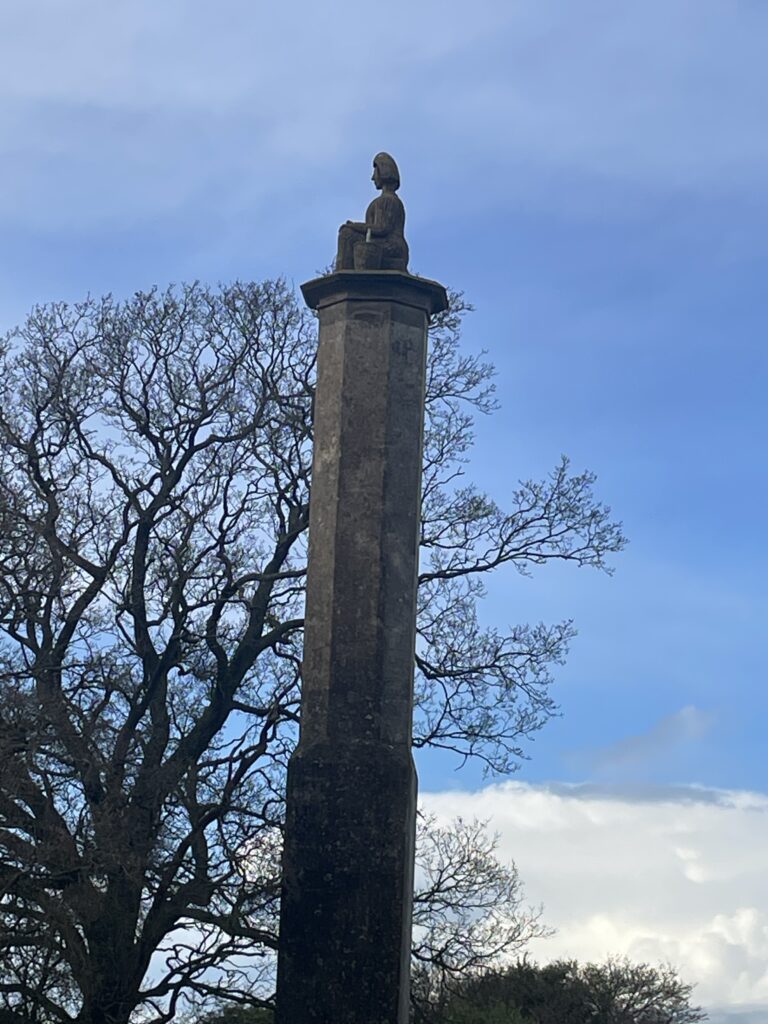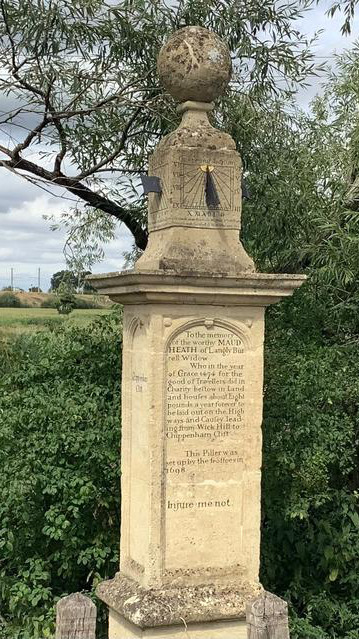This blog post was written by Louise Ryland-Epton.
The Victoria County History of Wiltshire are involved in an exciting new project recovering the lives of medieval women in Wiltshire. Louise Ryland-Epton tells us more about it.


These monuments commemorate a medieval woman from Wiltshire, Maud Heath—one dates from the 17th century and the other from the early 19th. They celebrate the narrative that in 1474, Maud entrusted property to several trustees to construct and maintain a causeway (a footpath). Five hundred and fifty years later, the trust still maintains the 4 ½ mile causeway in north Wiltshire, from Bremhill Wick to Chippenham. The 17th-century sundial originally remembers her as Maud Heath, a spinster from the village of Langley Burrell. The later pillar and somewhat artistically questionable sculpture is supposed to show her in the guise of a ‘peasant trader’ with her basket on the way to market. Both these monuments were raised by trustees of the charity established in her name. The problem is she was not a spinster, she was a widow, and she was not from Langley Burrell but from the village of Tytherton Kellaways, and she wasn’t a pedlar who sold eggs, she was a wealthy woman. In fact, she was not (according to the wording of the 1474 deed) even called Maud, she was Matilda. After the deed was rediscovered in the 1870s, the sundial was amended to show her as a widow, but the name has stuck.
Maud is one of the most ‘famous’ of Wiltshire’s mediaeval women, but if there are so many ambiguities in her story, you may ask what chance do we have in our research on other mediaeval women? Beside which, aside from the odd exceptional woman like Maud, were non-elite women doing anything of interest throughout this period anyway? The assumption that they were not I would question for many reasons. For one thing, I have always felt in my practice as a public historian that I must work hard to find and record women’s narratives. So often, characterised as an adjunct to a man (a wife or daughter), ordinary women nonetheless lived fascinating lives and made meaningful contributions to society. Researchers should not accept the narratives that we are given- consider Maud’s example. If we do, we will have an inaccurate and incomplete interpretation of the past, and our craft will be all the poorer.
This year, there is a six-month-long celebration of Maud and her causeway. I am undertaking, with John Chandler, also from Wiltshire Victoria County History, research to create a different narrative on the life of Maud Heath. I am also organising an event that will take place not far from the end of Maud’s causeway in Chippenham on 21 September. This study day will explore women’s history before 1600—their diverse impacts on the society, economy, religion and politics of the world around them. The event will feature papers and discussions and will draw on academics involved in the Victoria County History project and present their insights from research in place-based histories from Wiltshire and beyond. The event is specifically designed to promote women’s history, and local history groups and historians are encouraged to participate to facilitate a knowledge exchange.
For more information: https://www.wiltshirehistory.org/ https://yesterdaysstory.co.uk/
Louise Ryland-Epton is an Associate Fellow of the IHR. A passionate public historian, she researches and writes about the history of places, but she is particularly interested in women’s narratives in those places. She is a contributing editor in two counties for the Victoria County History (VCH) project, producing parish histories for future VCH-published volumes. Louise will be publishing a VCH-supported history book on the parishes of Kington St Michael and Kington Langley, Wilts, with Hobnob Press out in May 2024 and alongside the women’s history study day is excited to be working with Chippenham Museum, Wilts, on a summer exhibition in celebration of Maud Heath.

